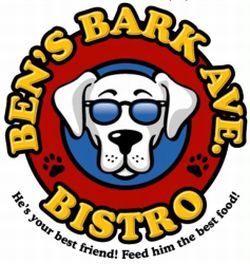
Bully Sticks for dogs are also called pizzle sticks. They're made from bull penises, though they're often marketed as dried muscles or tendons. They come in various styles, lengths and widths to suit any dog's chew toy needs, and since they contain 100% beef, they're safe and healthy for your dog to eat. Bully Sticks last a long time and will not break or splinter.
How Bully Sticks for Dogs Are Made
Bully sticks for dogs are made of dried bull penises. All natural bully sticks contain only pure beef, and they make a great chewy dog treat.
Manufacturers make bully sticks by removing the bull penis, cleaning it and then hanging it upside down, it may be stretched to make a larger chew, and it may be twisted or braided. Once the penis has been stretched and shaped, it's smoked or dried to make a long lasting, safe dog chew toy.
Bully sticks are available in a number of different sizes. Dogs of all sizes can enjoy bully sticks.
Benefits of Bully Sticks for Dogs
Bully sticks are safer for dogs than rawhide and other treats, because they're all natural and free of dyes, chemicals and pesticides. They're easy for your dog to digest, and their manufacture is monitored by the USDA, to ensure the quality of the ingredients.
Bully sticks are a great way to help maintain your dog's oral hygiene and health. They can prevent the buildup of plaque and tartar on the teeth, and help to stop the formation of cavities. Bully stick chew toys for dogs can help prevent periodontal disease and gingivitis, both of which can cause not only oral pain, inflammation and tooth decay, but can also lead to chronic and life threatening disease in the heart, liver, kidney and joints when bacteria spread from the mouth throughout the rest of the body.
Bully sticks are also a great way to help your dog relieve stress by chewing. Bully sticks last longer than other chews, and they have a long shelf life.
Why You Should Choose Bully Stick Dog Treats for Your Dog
Bully sticks are high in protein, but low in fat, so they make a great treat for overweight dogs. They're also high in vitamins and minerals, like calcium and magnesium, which your dog needs for good health.
Traditional rawhide chew toys present a choking hazard for many dogs, especially larger dogs, since they're capable of breaking the rawhide into small pieces which could lodge themselves in your dog's windpipe and cause him to choke.
Ben, our mascot, once started to bloat due to a raw hide being lodged in the back of his stomach. He would have died in about 5 hours, but a $2,100 surgery and six weeks of down time saved his life.
Bully sticks, however, are far less hazardous, since it's much more difficult for your dog to break the bully stick into smaller pieces. However, you might want to protect your dog by taking away the bully stick when it becomes very small, and replacing it with a new one.

